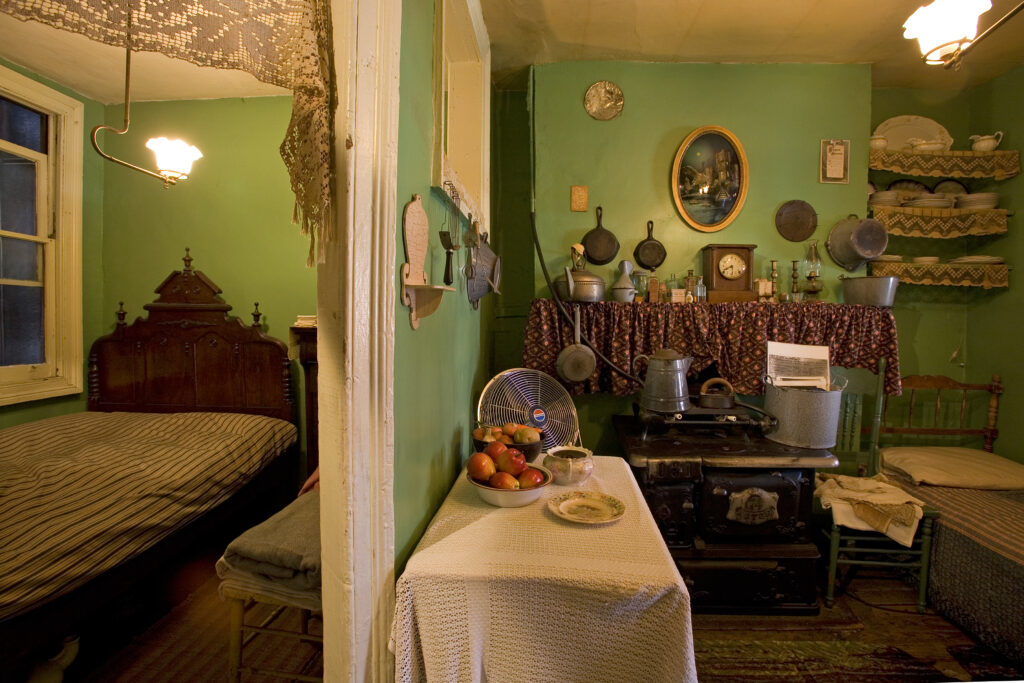This spirit of perseverance is as integral to the museum as the bricks and mortar from which it was built, and like the determined generations who once lived here, we faced our new challenges, knowing full well that it meant putting in hard work and making difficult decisions. We immediately cut recurring expenses by over 60%, temporarily furloughing all part-time and some full-time staff (while continuing to provide fully employer-paid health insurance for covered employees through the end of August) and laying off a handful of other colleagues. Senior management went on a week-on, week-off schedule, taking a 50% pay cut. Then in late July, when it became clear the pandemic wasn’t loosening its grip and that public health guidelines would prevent the museum from welcoming visitors inside our historic tenements at 103 and 97 Orchard St. for the foreseeable future, we made the tough decision to lay off the furloughed front-facing part-time hourly staff.
The museum’s April gala, which we had expected to net $700,000, had to be turned into a virtual event. But it nonetheless succeeded in netting $1.1 million. This followed an online fundraising appeal that started in late March and still continues; additional support arrived in April after the New York Times ran a story that presented the museum as a case study in the plight of small cultural institutions during the pandemic. This reassured us that we could shift our business model to rely equally on philanthropy and earned revenue, instead of deriving only 25% of our revenue from philanthropy.
And we had some lucky breaks. A wonderful anonymous donor offered to refinance a $9.5 million tax-exempt bond previously issued to help us buy our tenement buildings, giving us an especially friendly interest rate that will reduce our mortgage expenses by almost $500,000 annually. A PPP loan allowed us to bring back all furloughed full-time staff in late April to plan for the very different kind of programming we expect to do for the foreseeable future. And just as there are moments worthy of celebration in our present crisis, not everything in the tenements’ hardscrabble history was grim: In addition to providing for her family, Sarah Burinescu became the first woman resident at 97 Orchard to vote—a heartening landmark during the centenary of the 19th Amendment.
But at a time when so much is uncertain, the personal accounts the museum tells remind us that, when they uprooted themselves to make new lives in a new land, immigrants and migrants faced more uncertainty than we do today. Their stories are the source of the museum’s strength and its endurance—and of our determination to safeguard the museum’s future.
So we’ve pivoted to online and interactive programming as much to stay in the public eye as to discharge our mission. This includes digging into our archives to offer timely web-based exhibits such as “Beyond Statistics: Living in a Pandemic” and a reboot of our popular “Tenement Women: Agents of Change”; developing new live virtual programming that includes book talks, family programs and visits like “Secrets From the Privy Vault: Insights on a Tenement Rear Yard”; and creating educator initiatives like online curriculum (which now reaches a national audience!), digital field trips, and English as a second-language programs.
In addition, we’re testing whether offering these web-based programs to alumni clubs, family reunions, affinity groups and other private organizations can generate earned revenue.
We are about to restart the outdoor walking tours that had served 6% of our pre-Covid visitorship. And next spring we plan to launch a walking tour, under development for the past year, exploring the history of Black institutions and communities in lower Manhattan from the 17th century through the present, concluding with the important story of the African Burial Ground National Monument.
The museum is a historical reminder that ordinary people are worthy of celebration, and that’s an important message to preserve. So for now we’re focused squarely on getting through this time of turmoil, and drawing inspiration to do so from the immigrants and migrants who inhabited our buildings and our neighborhood. Jacob and Sarah Burinescu—with their hardships, losses, and hope for the future—are just one such story, and one with a happy ending. Their descendants held a family reunion at the museum in 2015.
—Mr. Vogel is president of the Tenement Museum.
